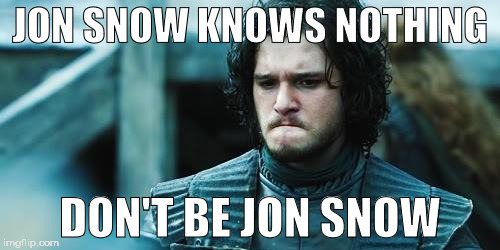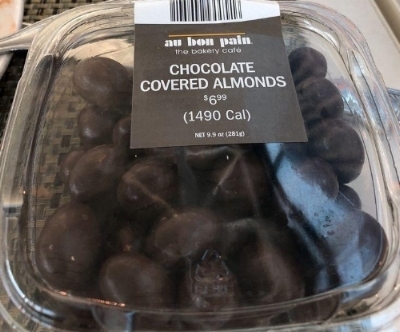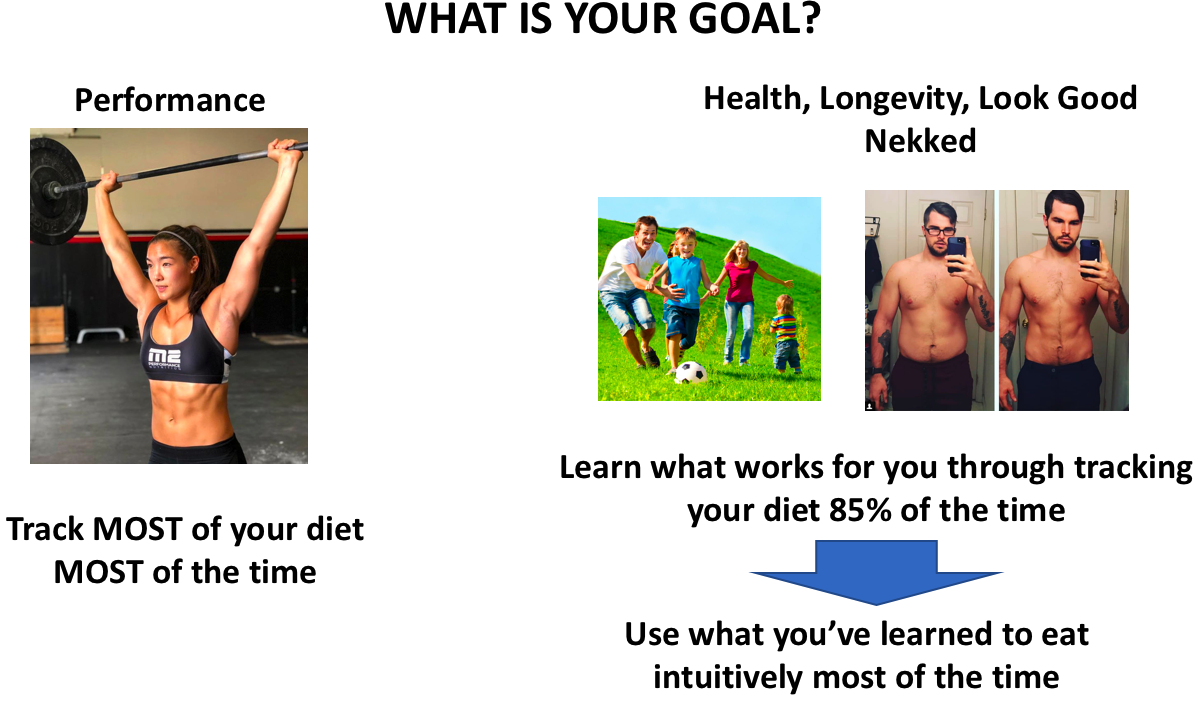It’s without question that tracking your diet through weighing and measuring is a powerful tool for changing body composition, achieving elite performance in and out of the gym, and just living a healthier, more informed life. However, I think it’s important to note that for 97% of people, it’s also not a long-term sustainable practice. I think that nutritional coaching has come up short in helping people learn to evolve their nutritional strategies into something that they can do for the rest of their life. We’re going to try and change that. If you’re interested in how to take control of your diet, and then adapt it to something you can do for the rest of your life check out the Part 2 post on The M2 Life Style Plan. For now though, read on and learn why we think this is an essential topic.
THE TYPICAL NUTRITION PATH
PHASE 1: The Jon Snow Phase

You start this phase having no real knowledge of what makes up a good diet. Hopefully, you recognize the fact that you know nothing, but most likely you THINK you’ve got the whole thing figured out, which is honestly even worse. The first time a person starts tracking their food intake, it can be an eye-opening experience.
My all-time favorites include:
- A woman finding out her morning coffee had 750 calories in it
- A male client discovering that a ½ pound of brisket had about 700 calories in it with 40 grams of fat
- A third client learning that one “container” of dark chocolate almonds was about ½ a client’s calories for the day

Hopefully, at some point you hire a real coach, someone that actually understands how hormones work, gets that its more important than just “eat less, train more” and can show how to move in the right direction. After a few months, you move into Phase 2…
PHASE 2: The John Nash Phase

After a few months of tracking, you’re a freaking macro wizard. Food prepping like a boss, going out to restaurants with your food scale, tracking over weekends at the in-laws. Things are good, progress is happening nicely and everything in peachy. The problem? The law of diminishing returns. The fastest changes always happen at the beginning, and then from there change takes time and adjustments and attention to smaller and smaller details.
It’s just a fact that it’s HARD to stay motivated when the pay-offs aren’t immediately obvious. The reality is though that keeping control over your diet for months into years DOES induce change, but just ones that you can’t see from week to week.
A different scenario is that you REACH your goal, either in body composition or performance. Congratulations!!! But… what the hell do we do now??!?! Do we keep tracking? Change the goal? How long do we do this for?
Typically at this point, we reach Phase 3….
PHASE 3: “Senioritis” Phase

Remember your final weeks of high school or college? You knew you were graduating, had a job lined up and just could not find the motivation to really care. Yea… that’s what often happens with tracking your diet. Either you’ve done it for too long, or the “results” of all that hard work aren’t changing fast enough to continue to motivate you. So you start guesstimating loosely, eating more meals out at restaurants, taking the weekends off, etc.
This isn’t a problem in and of itself, until you find that you’re really not making any more progress or that you’ve backslid.
The million-dollar question is whether macro tracking is setting you up to fail long term? I’ve said this before and I’ll say it again, IT DEPENDS.
Personally, I think most people should learn how to track for the reasons I’ve outlined above. Weighing and measuring teaches a person what appropriate portion sizes look like, what foods are high in protein, fat and/or carbs, and how to find a way to enjoy some of the sweeter things in life without going overboard.
However, once that lesson has been learned, then there should be a conversation about what the long-term picture looks like.
Critical questions that should be asked here:
- Do you have CLEAR athletic performance goals where small differences in fueling could make a huge difference?
- Do you have a CLEAR body composition goal that you’re aiming for?
- Do you have hormonal issues (female menstrual cycle as an example) that you’re trying to resolve?

I’m going to break down each of those goals, but I think that they can be depicted most easily in a visual image.
If you have clear athletic goals, or want to be extremely lean, then you will need to track your diet very closely most of the time. This goes along with many other aspects of “health” that need to be taken to the 99th percentile. 8+ hours of uninterrupted sleep, more time dedicated to training, a large emphasis on micronutrient dense foods, hitting your hydration goal every day, etc. However, even these athletes need a break to some extent. Each of our Crossfit athletes was told to take a significant break from tracking their diet after the Crossfit Regionals/Games depending upon when their 2018 season ended. This mental break was necessary to let them press the “reset” button, to live a normal live for even just a few weeks.
If your goal is more focused on health, longevity, some aspect of physical change (look better naked😏) then realistically there needs to be an exit strategy from tracking once you’ve learned the important lessons around how to succeed in those goals.
What does this look like? Let’s use another graphic:

This picture basically describes what I talked about above. You enter nutrition coaching really having not thought much about what goes into your pie hole for years. Either on your own or with the guidance of a coach, you learn to figure out how to weigh and measure your food, learning what quantity of macros and what level of food quality works for you and your goals. After this learning process, you begin to scale back your tracking from 6-7 days per week, to 3-4 days, to 1-2 days. Eventually you may only track one day every month. This is a good idea simply to make sure your “mental food scale” is still pretty close to an actual food scale. For me, I know that portions will inflate over time. What I think is 6 ounces of chicken is actually 9, so taking that one day to re-calibrate my brain is important.
In the long run, you may come back to tracking here and there (which is what the blue bars represent in that graphic). Maybe you want to dial in your performance for a local throw down or the CrossFit Open (RIP Regionals), or maybe you want to lean out a little bit more than usual for a beach vacation in the Caribbean. When those times come, apply the extra effort and you should see extra results.
Teaching people how to go through this “Nutritional Evolution” is an aspect of nutrition coaching that has been missing for a long time. Why? Because it basically means that I’m going to teach you the client, how to no longer need my coaching services. That seems like bad business… and maybe it is. However, I strongly believe that it is the right thing to do.
If you’re interested in this approach, check out our next post, which describes “The M2 Life Style Plan” and how to get in touch with us to get started.




